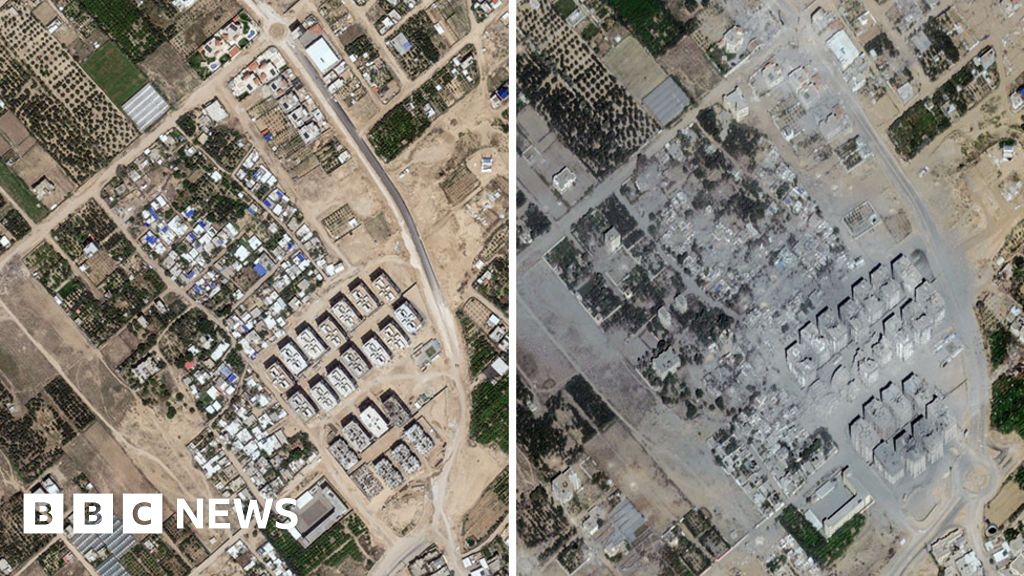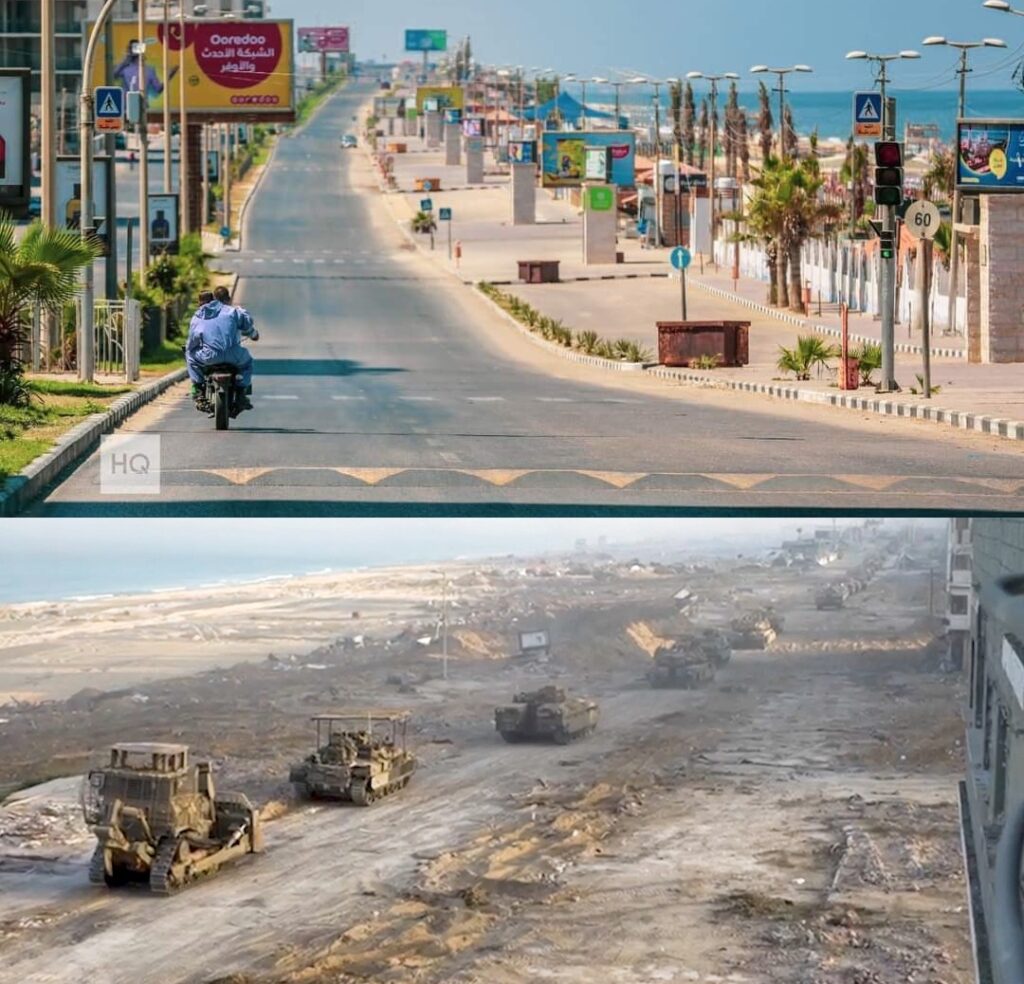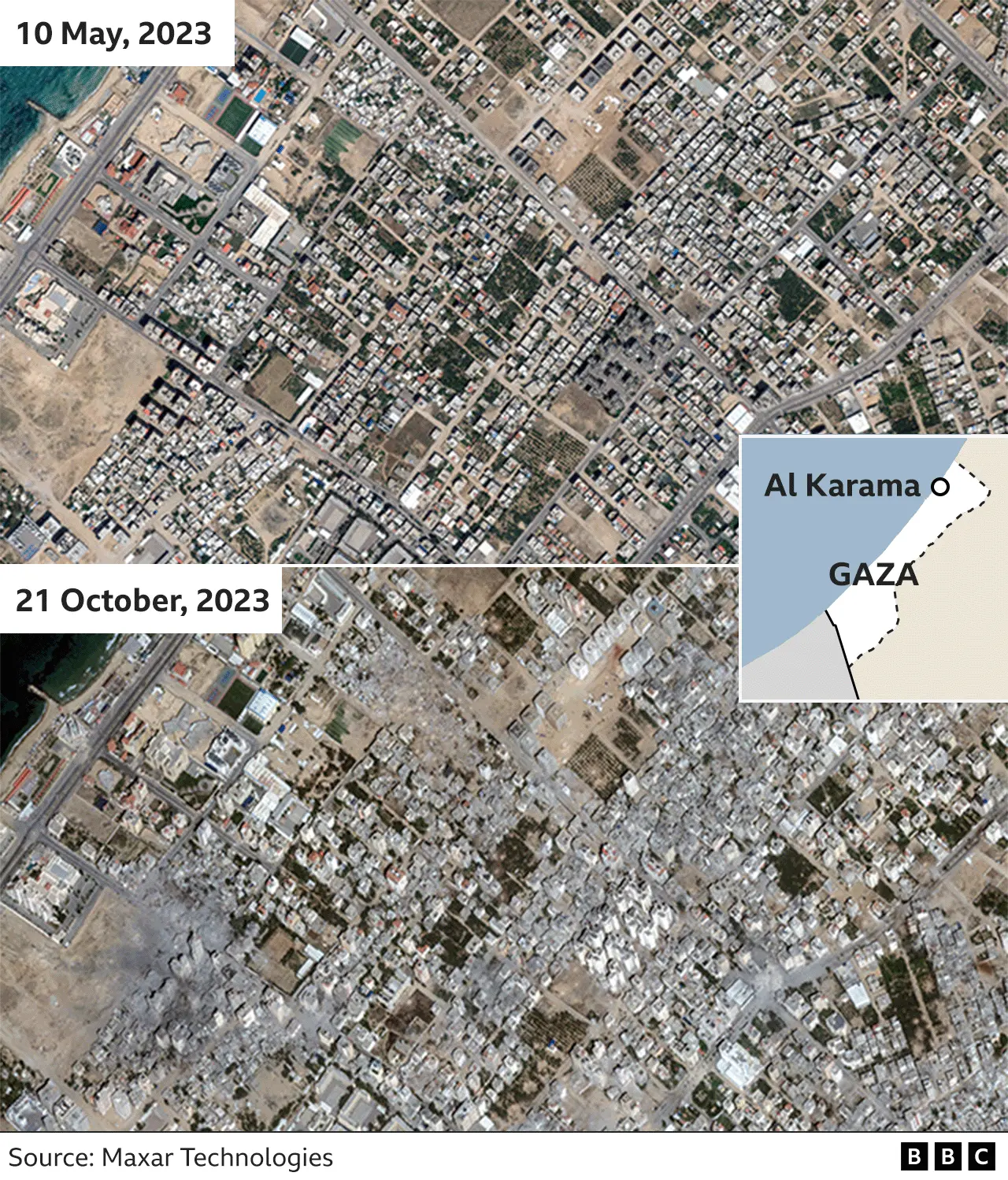The situation in Gaza over the last few months has been so chaotic that much of what we know comes with a question mark. Reports are often incomplete, outdated, or pulled from uncertain sources. For more than a week, Israeli airstrikes have pounded Gaza in response to an attack by Hamas militants. Gaza City’s main high street has been destroyed, but the memories of life before the ongoing assault still live on in the hearts of Palestinians. As people in Gaza face bombing, starvation, and miserable living conditions, their resilience remains.
Life before the recent escalation wasn’t easy. Gaza has long been under blockade, with limited access to basic needs like clean water, electricity, and medical supplies. But there was still a sense of normalcy—children going to school, families gathering for meals, and small businesses trying to keep going. The streets were alive with chatter, the scent of street food, and the hum of life.
Now, after the bombings and ongoing conflict, much of that has changed. Entire neighborhoods lie in ruins. Hospitals are overwhelmed, and people are surviving on barely enough food to get by. Yet, amid the rubble and despair, stories of strength, hope, and survival continue to emerge.
Table of Contents
- Life Before the Conflict
- Impact of the Recent Attacks
- Resilience and Survival
- Frequently Asked Questions
Life Before the Conflict
Gaza, before the latest wave of violence, was already a place of hardship. The territory has been under an Israeli-Egyptian blockade for over 15 years. Still, people found ways to live. Markets were filled with fruits, vegetables, and spices. Children played in the streets, and fishermen tried to make a living off the Mediterranean Sea, even though Israeli naval restrictions limited their reach.
There were schools, though overcrowded, and hospitals, though lacking supplies. People celebrated weddings, mourned deaths, and gathered for holidays like Eid. Life wasn’t perfect, but there was a rhythm to it. Families stayed close, and traditions remained strong.
Yet, even before the most recent escalation, Gaza was on the edge. Power cuts were common. Clean water was scarce. Jobs were hard to come by, especially for young people. But there was a sense of community, a shared struggle that bound people together.
Impact of the Recent Attacks
Over the past few months, Israeli airstrikes have devastated large parts of Gaza. Entire neighborhoods have been flattened. Families have lost their homes, their loved ones, and in some cases, their entire way of life. The bombing has made it nearly impossible for aid to reach those in need. Power and communication lines have been cut, leaving many completely cut off from the outside world.
Hospitals are overflowing with the injured, and there’s barely enough fuel to run generators. People are living in shelters, basements, or even open fields, unsure of where the next bomb might fall. Food is scarce, and clean water even more so. Children are being treated for malnutrition, and medical staff are working beyond exhaustion.
The destruction has been so widespread that even basic infrastructure—roads, sewage systems, and water pipes—has been damaged beyond repair in many places. Rebuilding will take years, and that’s only if the violence stops.
Resilience and Survival
Despite the destruction, life continues in Gaza. People are sharing food, sheltering strangers, and helping each other find safety. Children are still drawing, still dreaming. Some are even trying to study, using whatever books they can find, even if they have to sit under a tree or in a tent.
Survivors are telling their stories, ensuring that what’s happening isn’t forgotten. Activists and journalists are sharing images and videos, even when it’s dangerous to do so. The world is watching, and for many, that attention is a lifeline.
There’s also a long history of resilience in Gaza. During the 2014 war, Hamas forces abducted, tortured, and murdered Palestinians accused of collaborating with Israel. Even then, people found ways to survive. This time, the challenges are even greater, but so is the determination to keep going.
For those in Gaza, survival isn’t just about food or shelter. It’s about holding on to identity, to culture, to hope. It’s about knowing that, one day, this too will pass—and when it does, they’ll rebuild, together.
Frequently Asked Questions (FAQ)
What caused the recent conflict in Gaza?
The most recent escalation began when Hamas militants launched an attack on Israel, which was followed by Israeli airstrikes on Gaza in retaliation. The situation has since spiraled into one of the most intense periods of violence in recent years.
How has life changed for people in Gaza?
Life in Gaza has changed dramatically. Many have lost their homes, loved ones, or sources of income. Access to basic needs like food, clean water, and medical care is severely limited. Entire neighborhoods have been destroyed, and people are living in makeshift shelters or on the streets.
Is there any hope for rebuilding Gaza?
Rebuilding will take time, resources, and above all, peace. While the destruction is immense, the people of Gaza have shown remarkable resilience. International aid and diplomatic efforts will be crucial in helping Gaza recover, but that depends heavily on the political situation and ongoing negotiations.
You can learn more about the ongoing crisis and how to help by visiting UN OCHA, a reliable source for real-time updates and humanitarian reports.
If you want to understand the broader picture of life in conflict zones, you can also Learn more about humanitarian efforts and the challenges faced by communities around the world. For a deeper dive into how people cope under extreme conditions, check out this page: .



